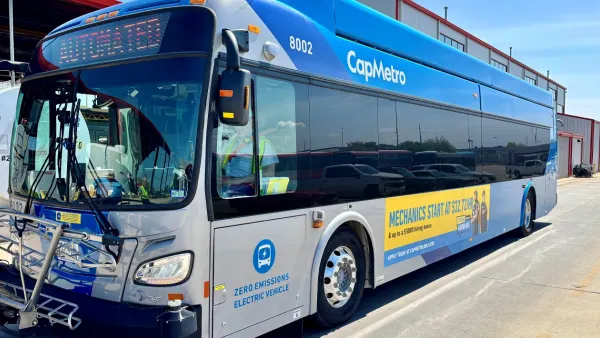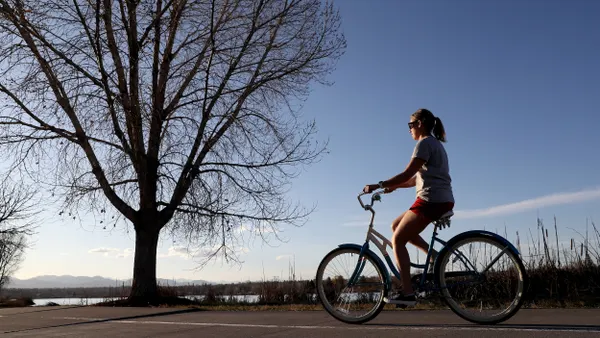Dive Brief:
- Chicago will spend $5 million to improve the speed and reliability along two of the city's highest ridership bus lines by alleviating bus "slow zones" at bottleneck intersections.
- The funding will go toward investments such as dedicated bus lanes at the approach to certain intersections, as well as new signs, pavement markings, curb extensions and other safety markings.
- The improvements would begin to get implemented next spring as part of the proposed 2019 budget, which the city council is scheduled to vote on next month.
Dive Insight:
The No. 79 and No. 66 bus routes were chosen as the first to receive upgrades because they carry the most passengers of the Chicago Transit Authority's (CTA) nearly 130 bus routes, with 7.8 million and 6.9 million rides last year, respectively. The upgrades are designed not only to improve traffic flow, but also safety.
"By making these targeted investments, our goal is to speed up bus service, improve reliability, increase ridership and customer satisfaction and lower costs for the CTA," Chicago Department of Transportation (CDOT) Commissioner Rebekah Scheinfeld said in a statement. "By doing a better job of organizing bus movements, we can also improve pedestrian safety."
Outgoing Mayor Rahm Emanuel this summer announced the goal to expand "transit-oriented development" and incentives for developers who building housing along high-capacity bus corridors. Additional infrastructure improvements are expected in other locations.
The city hasn't yet identified the intersections that will be upgraded, but as Block Club Chicago points out, adding a dedicated bus lane along certain portions of the bus routes could require eliminating some street parking.
While a number of factors contribute to the No. 79 and No. 66 bus lines having the highest ridership, a notable factor is that they both serve a number of lower income neighborhoods. The No. 66 runs from tourist-heavy and wealthy portions of downtown through revitalized neighborhoods and terminates in lower income neighborhoods on the West Side. The No. 79 runs through middle and lower income neighborhoods on the city's South Side, which has fought a negative reputation for decades.
Improving bus service in these areas, especially on the No. 79 route on the South Side, provides better transit options for residents in neighborhoods where car ownership is lower than in other parts of the city. It's the latest effort to improve mobility in underserved neighborhoods, along with the city's dockless bike-share pilot taking place in some of the same South Side neighborhoods.
The initiatives are in line with Chicago's new comprehensive plan, released earlier this month, that focuses on creating greater equity and opportunities for all residents.











